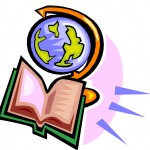
The emergence of the printing press constituted a fundamental landmark for the work of translators, whose resources not only abandoned the bastions of the ecclesiastical elite, but also went on to multiply exponentially concomitantly with the rise of the European bourgeoisie, which began to illuminate itself thanks to the democratization of knowledge provided by Gutenberg’s invention. The publishing industry – a direct consequence of the free market and modern illustration – standardized the periodical updating of content by way of “editions.” These editions, in a way similar to what happens with different models of cars, electrodomestics, and mass consumption products in general, were improved/expanded with respect to their previous versions in such a way that, as in the example of dictionaries, they went on to incorporate new words and terms following a mechanism that required official approval on behalf of academia as well as the competent institutions.
In this way, a translator in possession of a more recent version of a dictionary had more ample and updated resources than one with a previous edition. It is due to this that, until the end of the 20th century, a translator’s access to publishing resources was wholly conditioned by his geographical location relative to the centers of bibliographical production. Also, as changes in a language do not follow the laws of the market nor the timing with which texts are reedited, what did not fit in the edition of one dictionary would have to wait to be confirmed by the corresponding authority in order to later be included in the next version. In this way, a division was established between the terms included by an edition and those that were marginalized, which went on to become a chaos which was only included in specialized editions, as if idiolects, sociolects, and chronolects were exclusive entities prohibited from nourishing and eventually integrating the body of general dictionaries.
It is due to this that the emergence of the internet came to mend this dependence to which we translators were subjected. Besides making geographical location irrelevant in terms of access to different bibliographical resources (in the case of those of us who translate to and from English, the distance with England or the United States), in recent years the internet has been confirmed as a place substantially more liberated from all official approval and timing necessary for the edition of a dictionary in the Modern era. Resources such as WordReference, for example, aside from dictionary content, also frequently include a forum section that allows users to ask questions to other translators without having to wait for the resource to be updated or for its terminology to be officially approved.
So, if the printing press liberated content from the shackles of the elites, the internet seems to have arrived in order to liberate content from the limitations inherent to its materiality.
For the Spanish version of this blog, click here.
